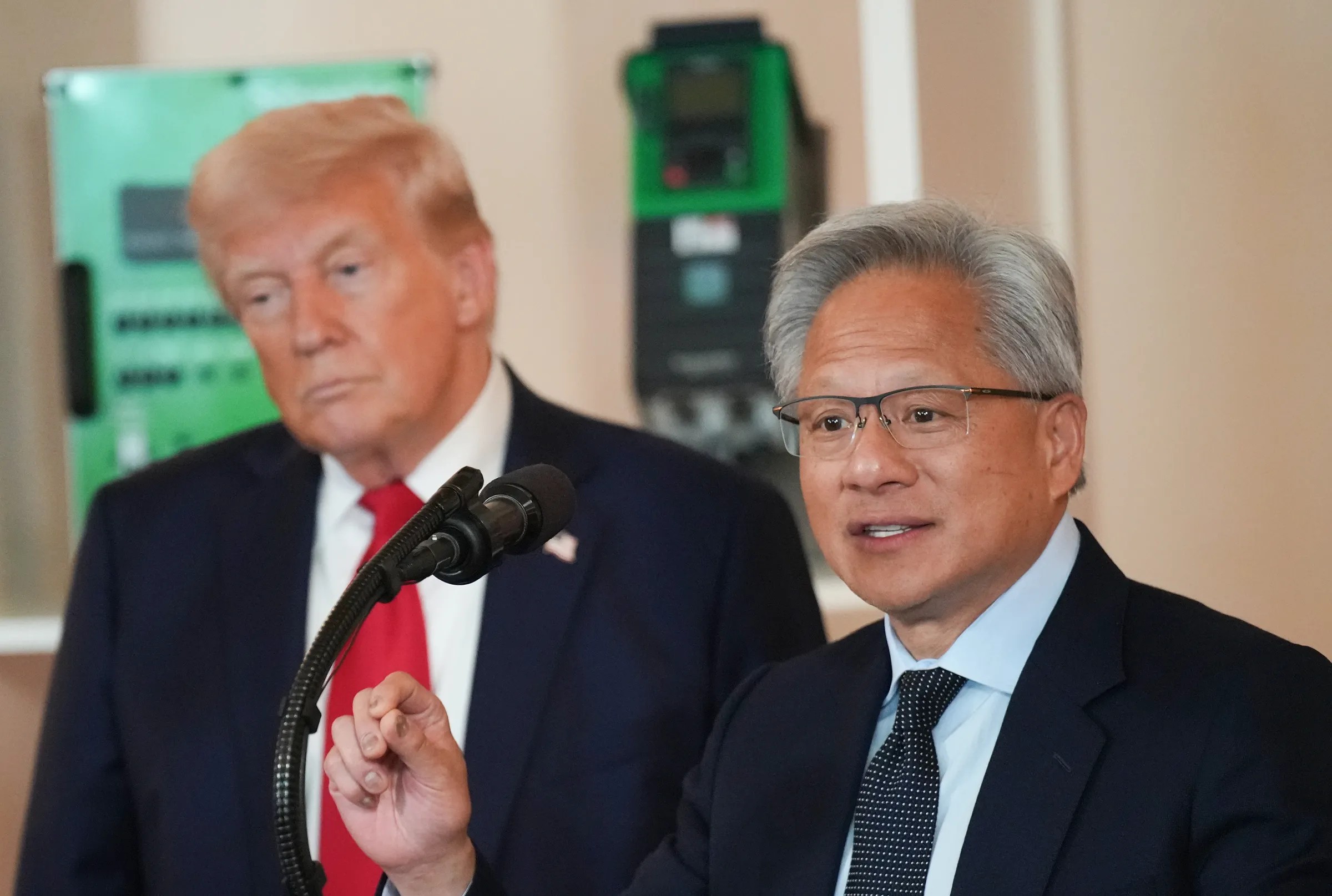Nvidia and AMD have agreed to pay 15% of their revenue from chip sales to China to the U.S. government, the White House confirmed.
In exchange, the companies will receive export licenses to sell Nvidia’s H20 and AMD’s MI308 chips in China, according to the Financial Times.
Analysts described the arrangement as “unusual,” reflecting President Donald Trump’s transactional approach to diplomacy. Investors view it as broadly positive, since it restores access to a major market.
Why the Semiconductor Giants Agreed to Pay 15% to Washington
Nvidia’s H20 chip was designed specifically to meet U.S. export rules for China and had not been shipped for months.
The company said, “We follow the rules the U.S. government sets for our participation in worldwide markets.”
AMD confirmed its license applications for MI308 exports have been approved. Previously, no conditions or revenue-sharing terms were disclosed when both companies announced the resumption of exports in July.
Ben Barringer, global technology analyst at Quilter Cheviot, said, “From an investor perspective, it’s still a net positive; 85% of the revenue is better than zero.”
Export License Conditions Give U.S. Firms a Competitive Edge Over Huawei
Despite the 15% levy, analysts said it is better for Nvidia and AMD to sell into China than to concede the market to Huawei.
“The question will be whether Nvidia and AMD adjust their prices by 15% to account for the levy,” Barringer added, “but ultimately it’s better that they can sell into the market rather than hand the market over entirely to Huawei.”
Shares of both companies closed moderately lower on Monday.
Global Implications: A New Model for U.S.-China Tech Trade?
The deal marks a distinct precedent. “It’s a good development, albeit a strange one,” Barringer noted.
“It feels like the sort of arrangement you might expect from President Trump, who is a deal-maker at heart.”
Neil Shah, partner at Counterpoint Research, called the move an “indirect tariff at source.” Daniel Newman, CEO of The Futurum Group, described it as a “sort of ‘tax’ for doing business in China.”
Nick Patience, AI practice lead at The Futurum Group, said, “I don’t anticipate it extending to other sectors that are just as important to the U.S. economy, like software and services.”
George Chen of The Asia Group said, “Semiconductor is a very unique business, and the pay-to-play tactic may work for Nvidia and AMD because it’s very much about getting export approval from the U.S. gov.”
China’s Uncertain Reaction and the Backdoor Debate
China has not yet commented on the deal. However, its state-run Global Times criticized the agreement.
“This approach means that the US government has repudiated its original security justification to pressure US chip makers to secure export licenses to China through economic leverage,” the paper reported, citing an expert.
Chinese regulators recently asked Nvidia to clarify reports about possible security vulnerabilities in its chips.
Nvidia denied the existence of “backdoors,” and repeated that denial after allegations from a social media account linked to Chinese state media.
“For China, it is a conundrum,” Shah said. “They need those chips to advance their AI ambitions, but also the fee to the US government could make it costlier, and there is a doubt of the US ‘backdoors’ considering the US has agreed for chipmakers to supply.”
PHOTO: GETTY IMAGES/ANDREW HARNIK
This article was created with AI assistance.
Read More






 Friday, 21-11-25
Friday, 21-11-25







